In 1912 the first two patents on stainless steels were submitted by Krupp Stahl in Germany. One represented an austenitic stainless steel (ASS), which was a forerunner of what is today known as type 304. Today, this steel together with type 316 dominates the stainless steel market with a total share of about 70%. It is quite remarkable that one family of stainless steels has earned such a dominating position. There is no other type of stainless steel used in such a wide temperature interval as the austenitic grades. They retain their toughness well below room temperature and also retain a substantial part of their mechanical strength at elevated temperature, where creep deformation is a concern in many applications. In addition, they show good resistance to wet corrosion and high temperature corrosion. They are, therefore, suitable in applications ranging from cryogenic temperatures, where the fracture toughness is insufficient in other steels, to temperatures well above 1000°C.
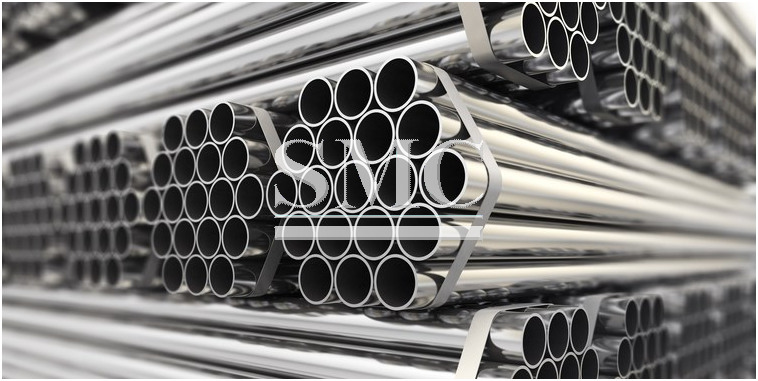
Moreover, they are easily formed and readily welded. Several features of ASS are intimately related to the face centred cubic crystal structure.
The dense packing of atoms leads to low diffusion rates and creep resistance at elevated temperature. Dislocation slip occurs on the four {111}-type slip planes (Figure 1).
The resulting 12 dislocation slip systems in combination with a low stacking fault energy leading to pronounced work hardening explains
the exceptional drawability and stretchability required in forming operations. Moreover, this explains the unique range of yield strength attainable by cold work (250 up to almost 2000 MPa).
Austenitic stainless steels are easily identified from the presence of straight twin boundaries visible in micrographs of the kind shown in Figure 2.
An abundance of twin boundaries reflect a low stacking fault energy, which is a distinctive feature of ASS and separates them from all other stainless steels.
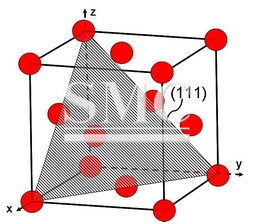
Figure 1. {111}-type glide plane in fcc. There are 4 such planes and 3 slip directions in each.
Thus, there are altogether 12 glide systems in fcc. –
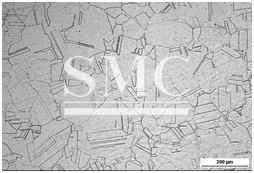
Figure 2. Light optical micrograph of type 304 austenitic stainless steel etched to produce contrast from grain boundaries (curved) and twin boundaries (straight).
To people in general, ASS are most well-known through the wide variety of kitchen utensils and domestic appliances, such as kitchen sinks, dish-washers,
silver ware and washing machines. The importance of this in the improvement of hygiene and our quality of life can hardly be exaggerated.
However, the large tonnage is represented by applications in the process industry such as heat exchangers (see Figure 3), pipe lines,
tubes for a wide variety of purposes and super heaters. A list, which is far from complete, is shown in the Table 1.
It is tempting to look into future and novel applications of ASS. Fuel cell cars driven by hydrogen will need large quantities of a corrosion resistant stainless steel.
Each cell is separated from the others by a thin surface treated steel sheet of 0.1 mm thickness.
The total quantity in each stack is about 100 m2 and type 316 surface modified ASS is preferred by many producers.
An Achilles heel of ASS is the sensitivity to stress corrosion cracking. Fortunately there are other steels which are almost immune to this type of corrosion
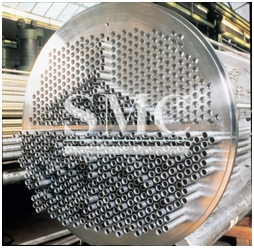
Figure 3. An example of a heat exchanger under construction viewed from the tube sheet into which the tubes are inserted.
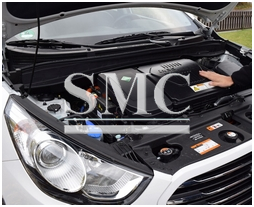
Figure 4. A view under the bonnet of a hydrogen fuel cell car. The fuel cell stack includes about 400 individual fuel cells. Photo: The author.
Shanghai Metal Corporation is a trusted aluminum alloy, aluminum foil price, stainless steel price and stainless steel manufacturer, kinds of stainless steel in china.
Guest contributors are welcome at the Alloy Wiki.It is a weekly wiki and guide on alloy information and processing technology, while also about the vast array of opportunities that are present in manufacturing. Our team of writers consists of a Machining Material Supplier / Machinist / Tool and Die Maker, a Biomedical Engineer / Product Development Engineer, a Job Development Coordinator / Adjunct Professor, and a President and CEO of a manufacturing facility.
Link to this article:Austenitic stainless steels - from kitchen sinks to fuel cell cars
Reprint Statement: If there are no special instructions, all articles on this site are original. Please indicate the source for reprinting:Alloy Wiki,thanks!^^


